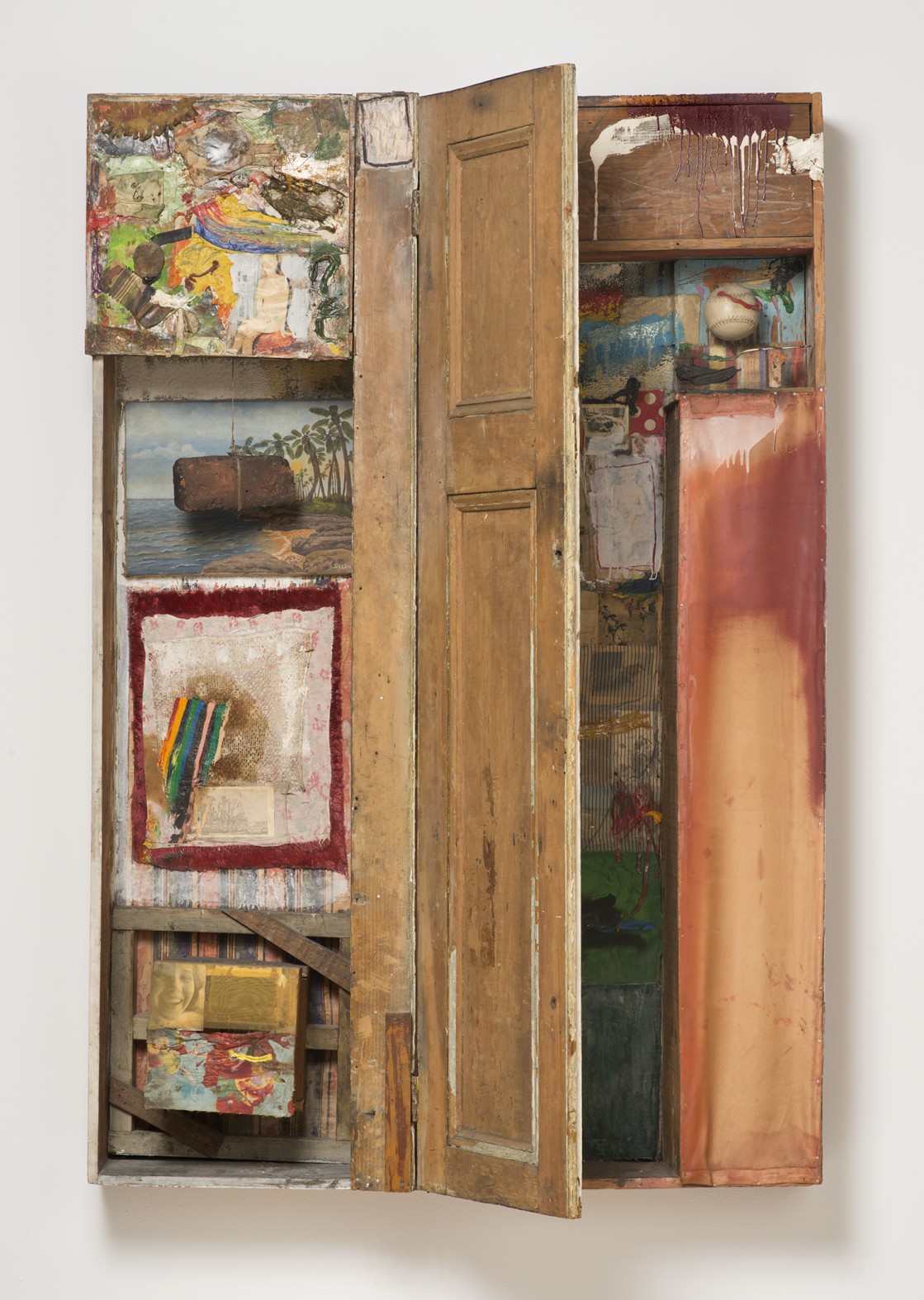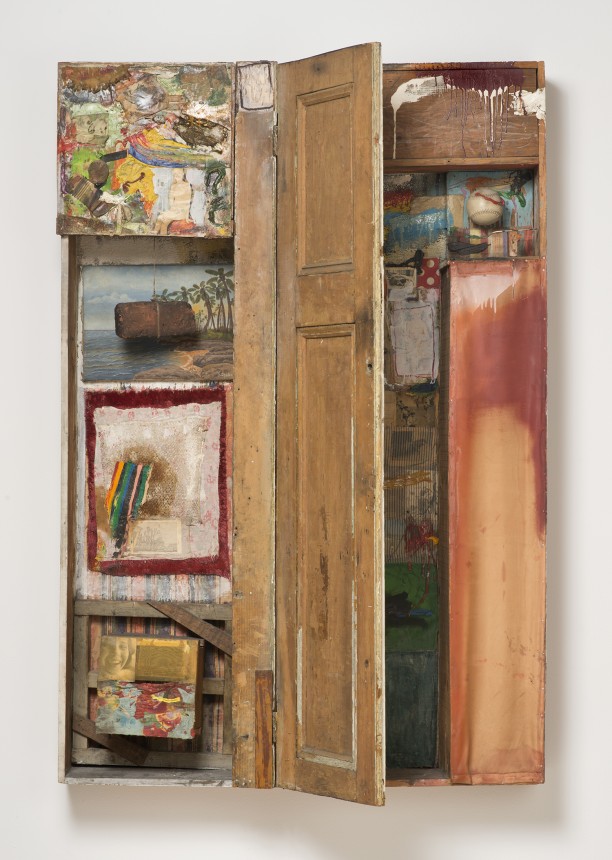Interview
1955

-
Medium
Oil, found painting, found drawing, lace, wood, envelope, found letter, fabric, photographs, printed reproductions, toweling, and newspaper on wood structure with brick, string, fork, softball, nail, metal hinges, and wood door
-
Dimensions
Overall: 72 3/4 x 48 x 12 in. (184.79 x 121.92 x 30.48 cm)
-
Credit
The Museum of Contemporary Art, Los Angeles The Panza Collection
-
Accession number
85.22
-
Object label
Robert Rauschenberg classified Interview as a Combine, which he defined as a work that combines the mediums of painting and sculpture, in that it both hangs on the wall and projects into three-dimensional space. Rauschenberg’s Combines also recombine ordinary found objects. Art critic Leo Steinberg likened them to printing press “flatbeds,” or any surface (tabletop, studio floor, bulletin board) on which heterogeneous materials can be scattered. Interview includes photographs, a fork, a softball, various fabrics, smears of oil paint, inexpensive art prints, and scraps of wood, among many other bits of detritus, set within a loose grid. Art historians continue to debate whether a Combine like Interview alludes to urban redevelopment in downtown New York, as signaled by the brick and cast-off door, or to art’s classical past, as indicated by the reproduction of a painting of Galatea, a mythological subject, in the center, or whether it is purposefully incoherent, offering nonsense accumulations that thwart interpretation.
Rauschenberg studied at Black Mountain College from 1948 to 1952.
